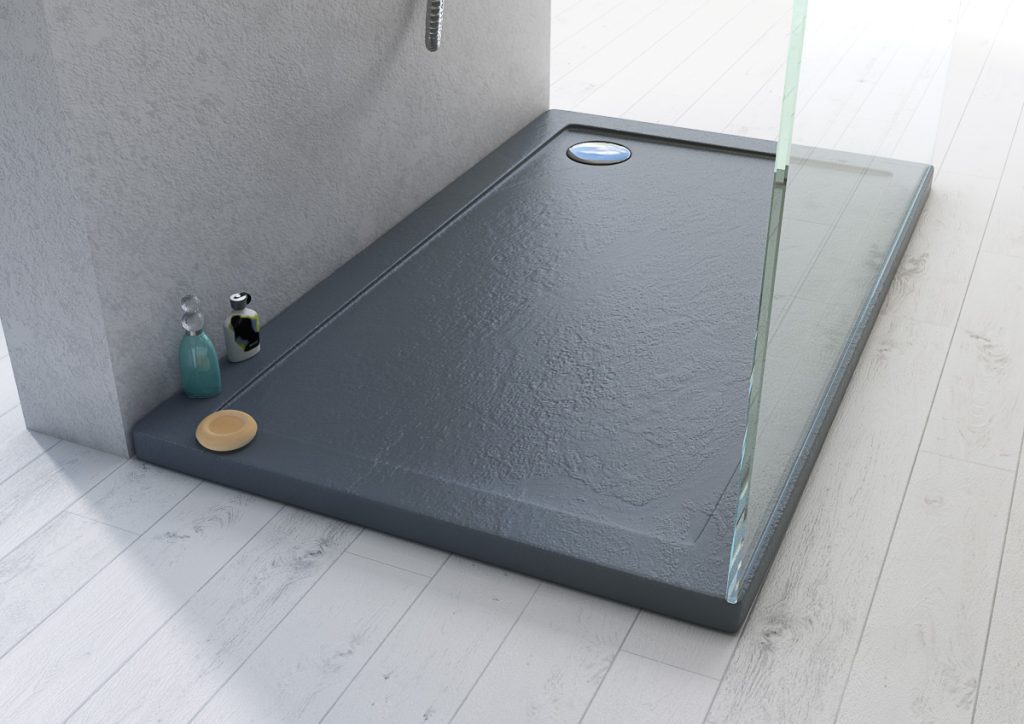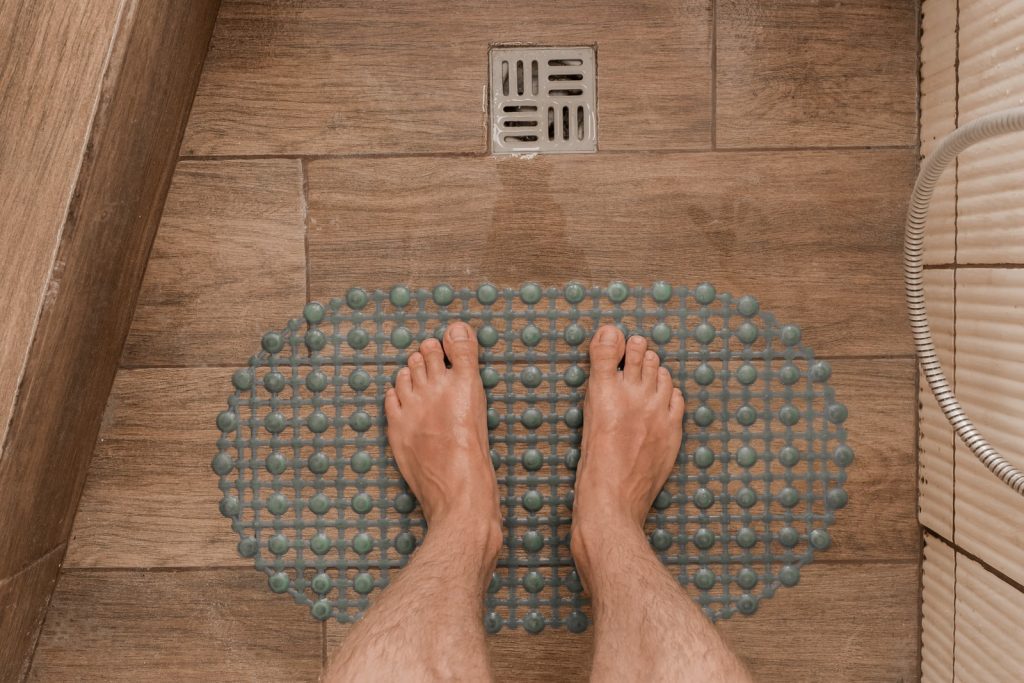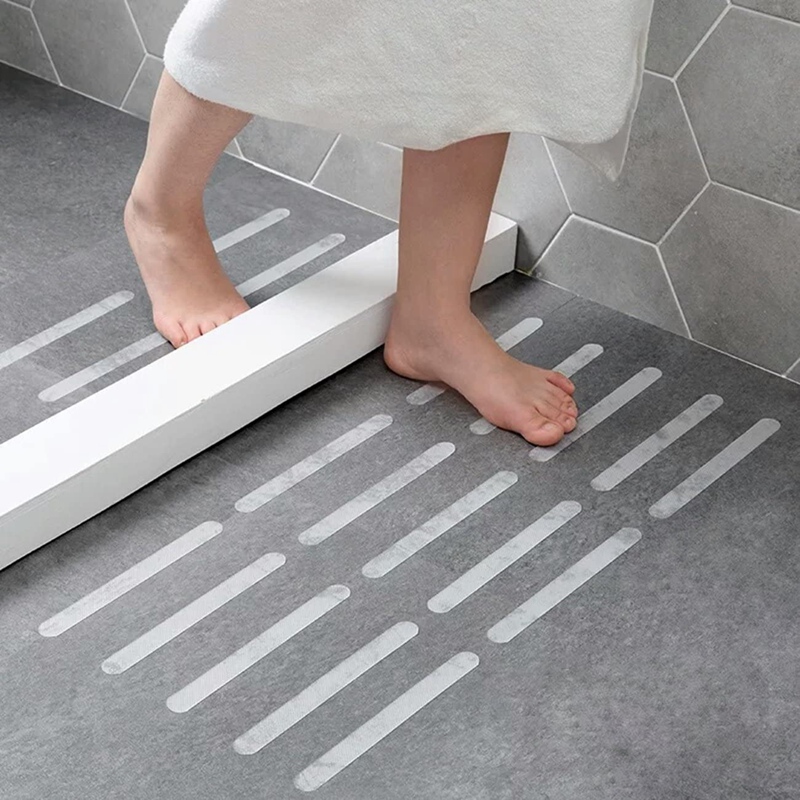The home is meant to be the safest place but the truth is it’s the most common place for all sorts of accidents. And according to the CDC, the bathroom is the most dangerous room in the house. In this regard, the shower room deserves special attention. In this guide, you will learn about the permanent and temporary anti-slip surfaces for shower floors and how they can turn your bathroom into a safer place.
How to prevent falling in the shower?
1. Anti-slip shower trays

Going for a non-slip shower tray should be your priority when planning for a safe shower or renovating the shower and bathroom. With an anti-slip shower tray, all family members can shower without worrying about slipping and falling. The trays are offered under different titles like anti-slip, slip-resistant, non-slip, and so on. You should refer to the product specifications. All non-slip shower trays must have a stopping feature made by a roughened surface. It ensures a secure footing and prevents falling when showering.
What are the different anti-slip levels and how safe are they?
According to DIN 51097, there are three different classes for slip resistance of a shower tray:
A: non-slip shower tray. It’s not as slip-resistant as B and C classes
B: shower tray with a minimum standard in the barrier-free bathroom
C: shower tray with maximum slip resistance
If you are planning a bathroom redesign with a barrier-free shower area, the Combia anti-slip shower trays are ideal. Replace the bathtub with a floor-level shower tray coated with anti-slip materials.
The anti-slip coating “GriP Antirutsch” is a TUV-tested Swiss quality product that is already applied to the surface of the non-slip shower trays during production. This is true for every Combia shower tray. GriP AntiSlip is non-slip certified according to DIN 51097 class C and has all important quality certificates, e.g. B. by TUV Rheinland and EMPA (interdisciplinary research institute in the field of materials science and technology development at the Swiss Federal Institute of Technology in Zurich).
The environmentally friendly two-component coating is almost invisible and easy to clean. The anti-slip shower tray is made of mineral colors, is extremely stable, and can also be used with a wheelchair. So it’s an ideal base for non-slip showers in barrier-free bathrooms.
2. Non-slip tiles

Whether you’re worried about your children and older family members’ safety while using the shower or just decided to renovate your bathroom with new floor tiles, you must know what an optimal floor is in terms of safety and anti-slippery properties.
Walk-in showers are often installed on the tiled floor. When choosing the tiles, you should pay attention to their slip resistance properties. Glazed tiles are very slippery and not suitable for the shower. Small mosaic tiles with a large proportion of joints offer increased slip resistance and also look attractive. However, since the grouts are not easy to clean they may require more care than with a shower tray.
With large-format tiles, you should definitely make sure that they offer a non-slip surface to get a safe shower. The classification is similar to the shower trays, but there are some special features.
Anti-slip tiles are special tiles with different features and levels of roughness. But the thing you need to care about is their traction level. The R9 to R13 rating groups define the safety of the tiles. Although this classification applies to the commercial sector, it still can be referred to for personal use.
R 9: low coefficient of static friction, recommended for normal private use
R 10: normal coefficient of static friction, recommended for “barrier-free”
R 11: increased coefficient of static friction
R 12: high coefficient of static friction
R 13: very high coefficient of static friction
The letters A, B, and C that may be attached indicate rating groups for barefoot wet areas and roughly correspond to the classification of shower trays that has already been explained in the text above.
A for dry floors
B for wet floors
C for swimming pools
For example, tiles marked “R10A” are suitable for the walking area in the bathroom, while tiles of the class “R10B” are well suited for showers and “R10C” for areas that are permanently under water such as swimming pool steps.
3. Make the shower non-slip afterward
Of course, you can also make your shower anti-slip afterward, for example with anti-slip stickers for showers. Here is an overview of the various methods of making the shower area safer. All variants are suitable for both the shower tray and the tiled shower floor.
Anti-slip shower mats

Shower mats are available in a wide variety of colors and designs. Shower mats with suction cups do not slip away when showering. It is also practical if the shower mat has holes. This prevents water from collecting on the mat while showering, and thus no mold can form.
Anti-slip stickers

Anti-slip stickers and strips can firmly stick to your shower floor so that no dirt and scum can form underneath. This is an inexpensive and quick way to make the shower non-slip. However, unlike shower mats, these anti-slip stickers cannot be simply removed from the floor for cleaning. The surface of the anti-slip stickers is coarse-grained and thus relatively susceptible to dirt.
Anti-slip shower shoes
If you don’t want to permanently change your shower area, wearing non-slip shoes, such as bathing shoes with rubber soles, is another way to secure your feet.
4. Even more safety when showering
If you want to have even more safety when showering, installing grab bars can be very helpful. Older people as well as small children will get a better grip and additional safety in the shower.

For frail elderly people, it is worth buying a shower stool or installing a folding shower seat. You can simply take out the stool after showering and use it next to the washbasin, for example. Fixed shower folding seats can be folded up to save space when not in use. So they don’t disturb other family members while showering.
We wish you every success in planning your anti-slip shower!






